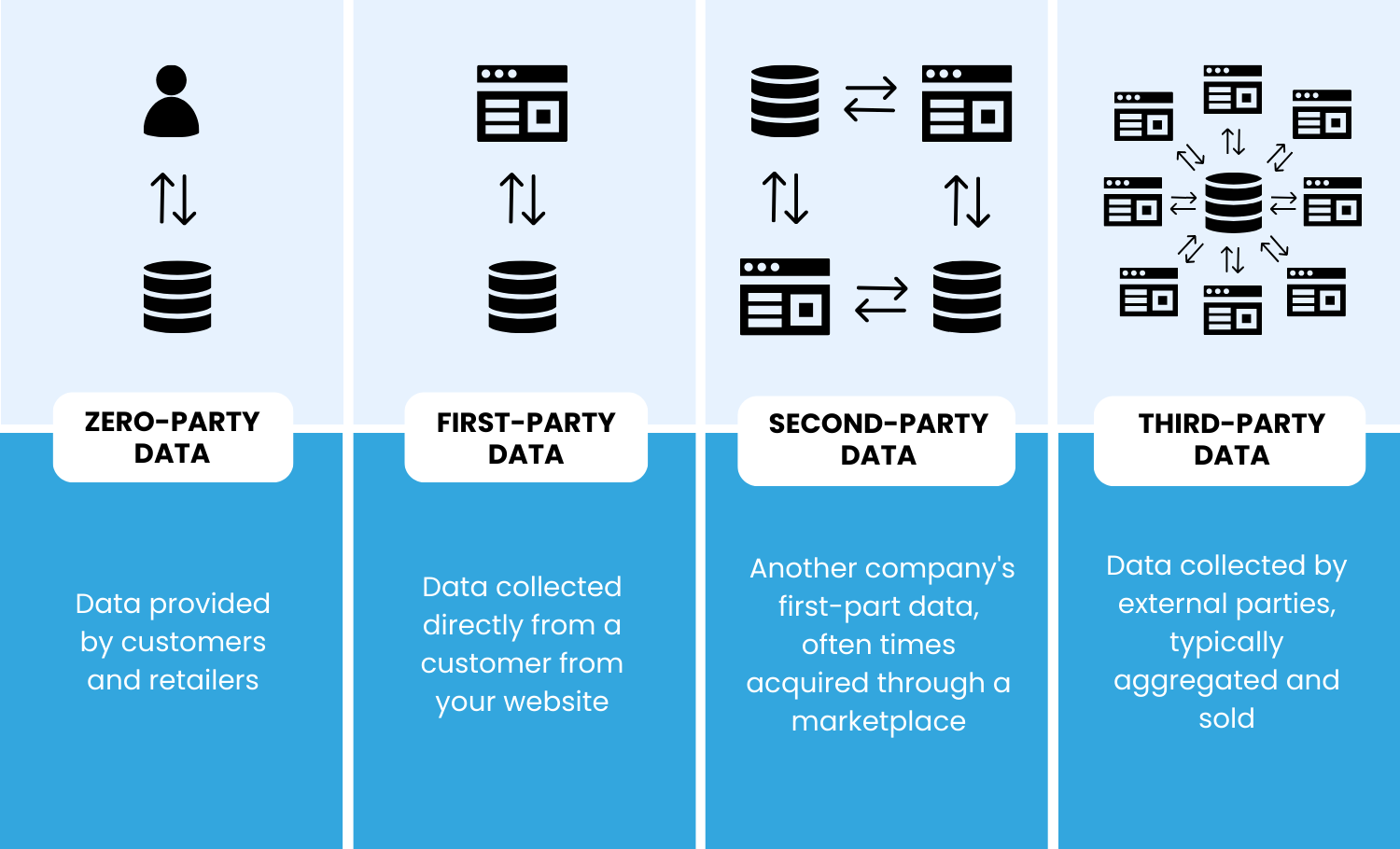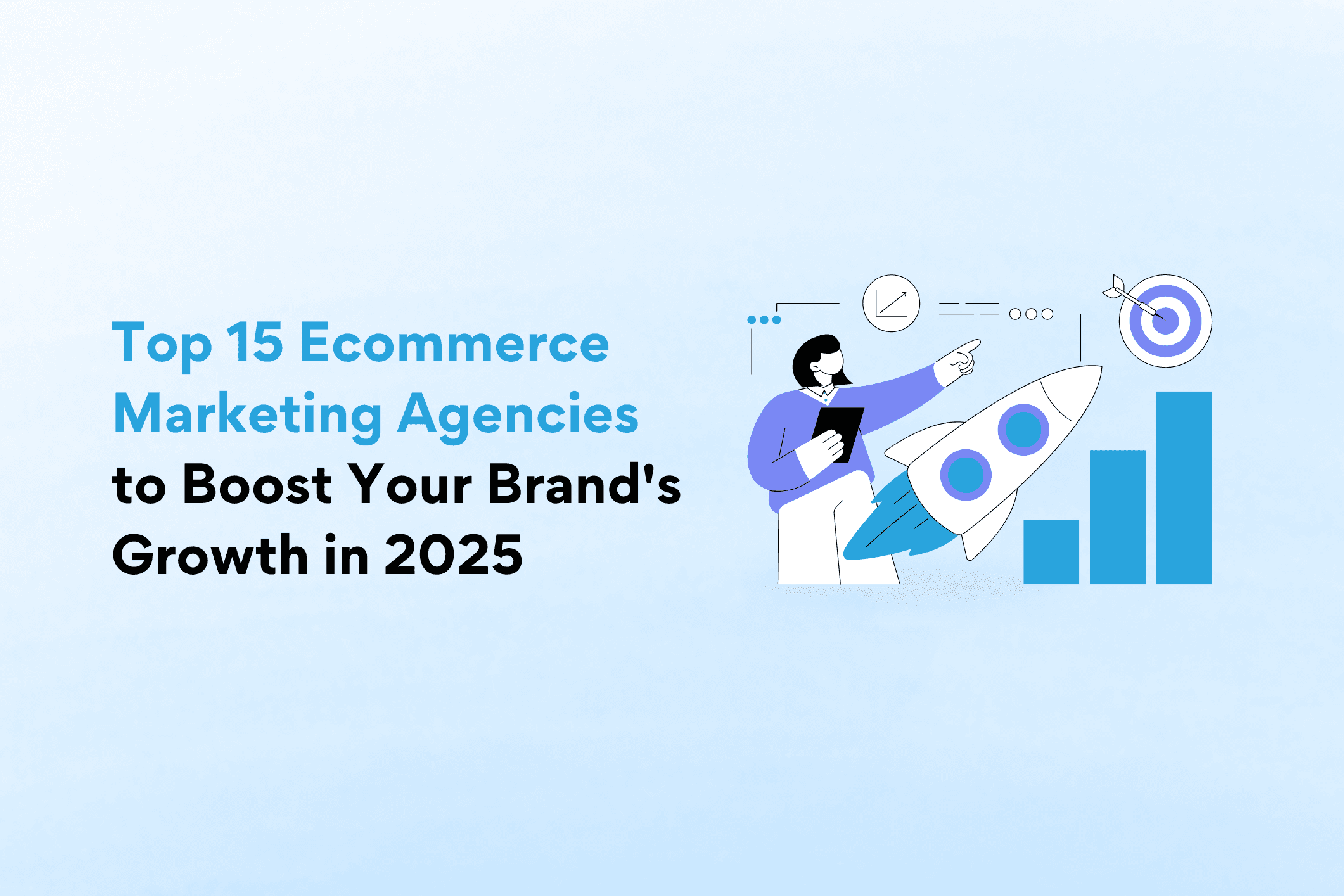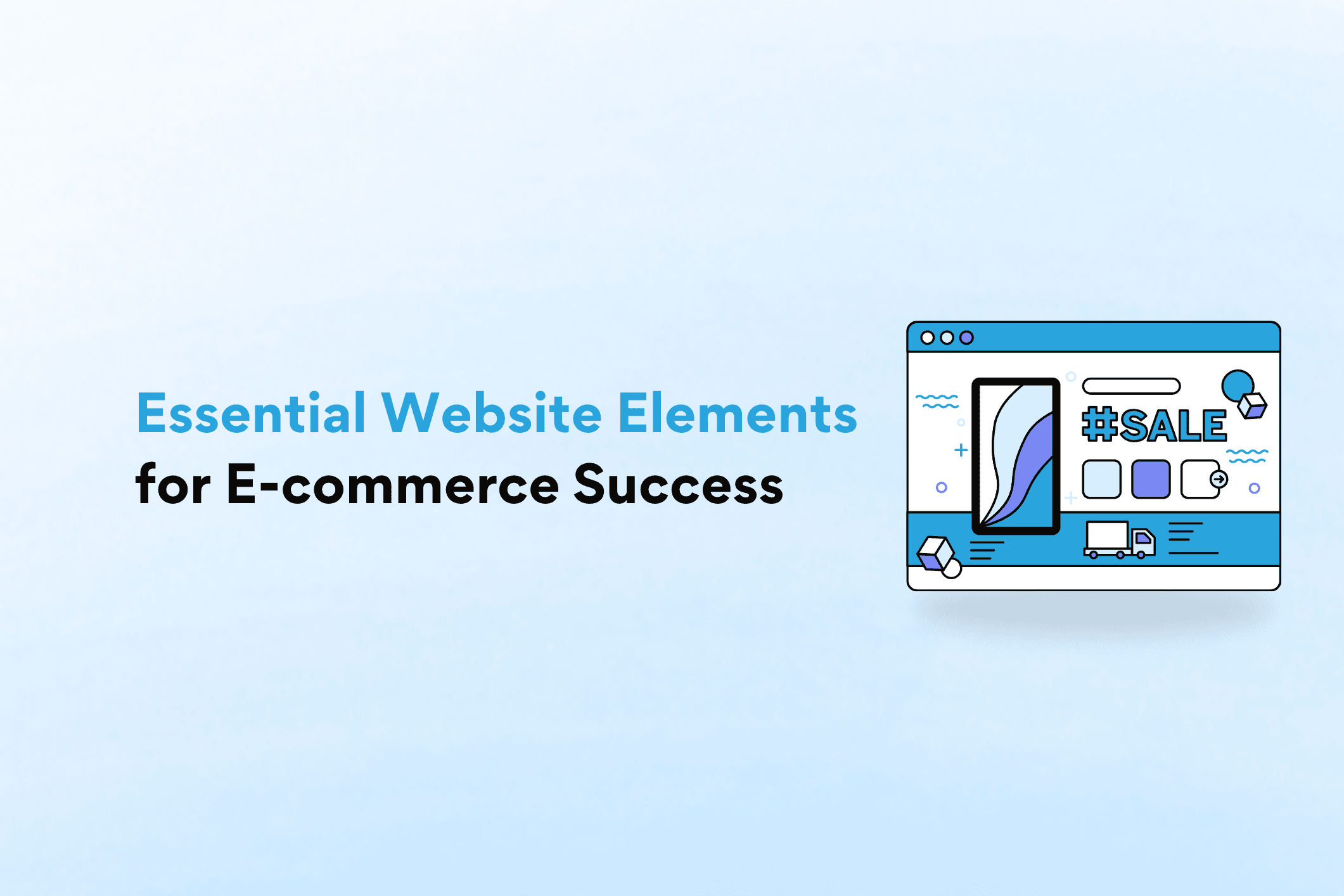It’s 2024. Experts agree that zero-party data is the future for marketers and e-commerce brands. This guide will walk you through how to use zero-party data to get to know your customers and drive action. Buckle up.
What Is Zero-Party Data?
Before we get into the nuts and bolts of zero-party data strategy, let’s settle on a shared definition. For the sake of this guide:
Zero-party data is data that a customer “intentionally and proactively” shares with a brand, usually through surveys and polls. It’s a term coined by Forrester Research (way back in 2018) that’s also sometimes referred to as “explicit data.” This freely given intel might include purchase motivation, brand discovery details, buying preferences, or even birthdays.
Because you’re getting this information directly from the source, marketers widely consider zero-party data to be the most accurate form of data. Zero-party data can also be used to fill holes in your marketing data, e.g. a way of tracking all those customers who come from TikTok that don’t turn up in your GA Referrals numbers. It’s also arguably the least icky — no sneaky tracking required.
“Zero-party data, sometimes called “explicit data,” is data that a customer “intentionally and proactively” shares with a brand, usually through surveys and polls. Because you’re getting this information directly from your customer, zero-party data is considered the most accurate form of customer data.”
What Zero-Party Data is Not
Zero-party data is not “implicit data,” or any data you collect on your customers that they don’t proactively give you. In other words: The sneaky stuff that privacy laws have been cracking down on recently.
Zero-Party Versus First-Party Data
So: zero-party data = information freely given to you by your customer. First-party data is the information you collect on your customer from your sources and channels. This might include social media, mobile apps, websites, Shopify, email triggers, or SMS.
The biggest advantage of first-party data is that you own it. But…it’s a lot of data. And it takes a lot of work on your company’s part to sift through it. There’s also a certain amount of guesswork and room for error.
So, while first-party data is important for digital marketing or ad-buying efforts, zero-party data is more reliable and digestible. And that’s why zero-party data is essential to any marketing strategy.

What about Second-Party and Third-Party Data?
Second-party and third-party data are sort of like cousins twice or three times removed, which means you know a lot less about them, and you can’t always count on them to show up for you.
Second-party data is actually first-party data that another company collects, packages, and sells. Pros: More information on your customers. Cons: Not always trust-worthy, and also, customers dislike the idea of their data being bought and sold!
Third-party data is basically “big data,” in that a company aggregates data from multiple sources, then sells it as a package on a data exchange platform. That means more volume, which is both a pro (power in numbers!) and a con (more room for error). Third-party data is also typically sold to many companies, including potentially your competitors.
KNO’s Takeaway: You must know and trust the source if you purchase second-party or third-party data. Not everyone selling data out there is reliable, and many sources are at least ethically questionable.
The Benefits of a Zero-Party Data Strategy
1. You Can Personalize Ad and Marketing Campaigns
Collecting zero-party data through post-purchase surveys and email surveys can help guide your marketing efforts. By asking your customers questions like:
- How did you first hear about us?
- What made you want to buy it?
- How did you get to our site today?
- Who are you buying for?
Here’s a perfect example: One of our brands used a KNO post-purchase survey to collect zero-party data from customers about where they came from.
The results were fascinating. Only 19% of people who found the brand on TikTok bought in less than one week, while a whopping 58% of people who found the brand on Google bought in less than one week.

Using zero-party data, the brand adapted its marketing strategy to double down on paid ads for Google that would drive people directly toward its Shopify collection. It also revised its TikTok strategy to focus more on initial brand awareness.
2. You Can Use It to Fill Holes in Your Reporting
We all know this truism: Google Analytics will only get you so far. If you’re struggling to understand where your customer is coming from, collecting zero-party data can help give you a complete picture. For example, using a post-purchase survey, you can find out that a new customer first heard about you through word-of-mouth, followed you on TikTok and Instagram, and finally bought after seeing a flash sale ad on Google. Your analytics data ain’t going to tell you all that.
3. You Can Improve Your Customer Experience
The best way to determine how you’re doing with customers is to ask them. This also has an added benefit: It makes customers feel heard and respected, proving that your brand truly cares about their opinions and feelings. In this scenario, you’d ask post-purchase survey questions like:
- How did you enjoy the checkout experience?
- How likely are you to recommend us to a friend?
- Anything we can do to improve the checkout experience?
For more customer satisfaction survey ideas, we love this customer survey question round-up from the team at Hubspot. (If you’re a KNO customer, we also have custom customer experience survey templates built right into our platform.)
You can also use the confirmation screen to drive customers to take action that will improve their overall experience. The haircare brand Only Curls did this using KNO’s survey technology.
Only Curls knew via zero-party data that their customers had a better experience when they bought products through their app (which they made through Tapcart), but only a fraction of customers had downloaded it. So, Only Curl’s encouraged customers to download the app directly from their survey confirmation screen. In only weeks, they increased app downloads by the thousands.

Caption: Only Curls used Kno to drive an extra 1k downloads of their app in just two months.
4. You Can Use It to Develop New Products and Services
If you’re considering launching a new product, second or third-party data can help you analyze the performance of past products and predict what might perform well next. But customers are human beings with unexpected preferences and interests. Cue the magic of zero-party data.
Leather goods company, Range Leather, knew their customers pretty well from the data they collected across platforms. Still, it wasn’t until they launched a survey to collect zero-party data that they discovered something unexpected: Wholesale was a massive untapped opportunity for them. Turns out, over 21% of their customers wanted to be able to order custom hats. This discovery led them to offer custom wholesale orders as a new service.
“Kno offers super user-friendly post-purchase surveys,” says Range COO Tim Aton. “Why not let customers tell you exactly what you need to know? Ask them, and they will tell you.”
How to Collect Zero-Party Data Surveys
We’ve discussed surveys a lot because they’re one of the best ways to collect zero-party data and drive action. They’re highly customizable and flexible, allowing 1) you to dig in as much as you need and 2) your customers to share as much or as little as they want. You might send them via email or add them directly to the checkout experience. Either way, they’re a direct line to your customer.
Quizzes
Who doesn’t love a quiz? You’ve likely seen quizzes used on brand websites as a lead generation magnet, but these quizzes are also a savvy way of collecting zero-party data.
Take this example from the millennial-friendly vitamin start-up care/of. As a potential customer answers quiz questions, care/of is collecting zero-party data on details that will inform how they market their product and what services to offer. Here they will learn how many vitamins their average customer is willing to take:

They also have a survey about supplement powders, which can help them weigh whether they should launch a branded collagen powder or protein powder:
All directly from the source. Smart, right?
Polls
Similar to surveys and quizzes but slightly different, you’ll often see these surface as social media posts. This is also zero-party data!
User Interviews
The most bespoke level of zero-party data, user interviews are a common practice for UX teams. Pros: By interviewing customers or potential customers one at a time, you get all sorts of details straight from the horse’s mouth. Cons: They’re obviously time-consuming and a customer’s bias might skew your research.
Gated/Exclusive Content
Free online courses, e-guides, VIP access offers — if you offer these kinds of must-have resources to customers, you can ask them to share some zero-party data with you to get access.
Loyalty Programs
Imagine the possibilities: Your customer logs in every time they purchase a product to accrue rewards points (much like Sephora’s Beauty Insider program). Each time they log in, they’re giving you more zero-party data. And if you combine a loyalty program with a post-purchase survey, you can discover what your most loyal customers value, i.e., what keeps people coming back.
How to Create a Zero-Party Data Strategy
Determine Your Biggest Question Marks
Every brand is different, so we recommend starting with a brainstorming session where you ask your team what their biggest questions about your customer are. Here are a few common ones:
- Where are they coming from?
- What products do your customers want next?
- What makes them go from browsing to buying?
- How much money do they spend based on which platform they come in from?
- Are they buying your products for themselves or as gifts?
- Just how much does TikTok drive buy?
These are all valid and important questions, and we typically recommend picking three to explore per quarter by deploying them in surveys and tracking your results.
Find the Right Platform for Collecting zero-party Data
There are plenty of ways to collect zero-party data that range from full-service platforms to plug-and-play Shopify apps (fun fact: KNO sits squarely between these two styles, which makes us one of the friendliest survey tools to use) to sending a free Google Form to your email list. What’s important is finding a tool that supports everything you want to accomplish. We believe in tracking data over time and asking questions that evolve based on your audience’s responses — hence why we built KNO specifically with e-commerce businesses in mind.
Some zero-party data collection platform options:
- SurveyMonkey
- Fairing (See how Fairing and KNO compare)
- KNO (Duh. But just so you know, we offer a completely free trial)
- Google Forms
- Qualtrics
- Typeform
Analyze Your Data, Tweak, and Repeat
To understand zero-party data, check in with your customers’ responses regularly and often. As you begin to notice patterns, adapt your surveys to discover more. We also love sending surveys to specific groups of customers to dive even deeper into their needs and wants.
A Quick Note on Zero Party Data and TikTok
TikTok is a bit of a no man’s land for tracking, right? One of the best ways to figure out a successful TikTok marketing strategy is to ask your customers what role TikTok plays in their purchase decisions. The results are fascinating but too long to get into here. That’s why we have an entire TikTok report, which you can download for free.
Examples: How Big Brands Use Zero-Party Data
In recent years, brands have gotten very creative about using zero-party data. Here are just a few examples from big-name brands and smaller start-ups.
Netflix
For what: Improving recommendations. The company collects data from its customers about what they watch and what they skip, then uses that information to recommend new content and suggest hyper-specific themed collections.
Nike
For what: developing new products and platforms. Using surveys and feedback from its Nike Run Club app and other apps, Nike collects customer data about their workouts, running habits, and more, then uses zero-party data to create new, cutting-edge products.
OnlyCurls
For what: Mastering its TikTok marketing strategy. OnlyCurls assumed that only its youngest customers were coming in via TikTok until they used a survey to collect zero-party data. Customers of all ages were visiting TikTok to get tips on curly hair care. As a result, OnlyCurls adapted its strategy to be more inclusive and double-down on educational haircare content on TikTok.
Sephora
For what: Customizing marketing campaigns. The company asks customers questions about their skin type and beauty preferences, then uses that information to send them targeted ads for relevant products.
KNO Brand Partner
For what: Discovering that gift buyers were its biggest customers. Through a KNO survey, a brand found that people purchasing its products for gifts had a 55% AOV than people buying for themselves. So, they now focus their marketing efforts on the biggest gifting periods — holidays, Mother’s Day, Valentine’s Day, and more.

Glossary of Terms
Data exchange platform: Where you go to sell or buy third-party data.
Explicit data: See “zero-party data.”
First-party data: Data collected by you, the brand, on your customer through various channels including social media, email and web apps. You own this data.
Implicit data: Data brands collect on customers that they have not proactively given to the brand; customer data not given by choice.
Post-purchase survey: Surveys conducted after checkout to learn more about your customer and what motivated them to buy. A form of zero-party data. (One of our favorite types of surveys here at KNO!)
Second-party data: Data that another brand or company collects, then sells directly to you.
Third-party data: Data collected by a company from multiple other companies or brands, then sold to multiple companies. You do not own this data, and many other companies might be using it, too.
Zero-party data: Data that customers “intentionally and proactively share” with a brand, usually through surveys and polls. Sometimes called “explicit data.”
How to Use KNO to Turn Zero Party Data Into Action
If you’ve made it this far, you already KNO: Our survey platform can help you collect zero-party data, glean insights, and turn them into action. We integrate with Shopify and Klaviyo, too. Sign up for a free trial today to give us a test run.

Jaime is a seasoned marketing professional with a rich background in client engagement and education for leading tech startups. Currently, she is leveraging her expertise at KnoCommerce, where she plays a pivotal role in driving strategic marketing initiatives. Over her career, Jaime has cultivated extensive experience working directly with clients and customers, demonstrating a keen understanding of their needs.



